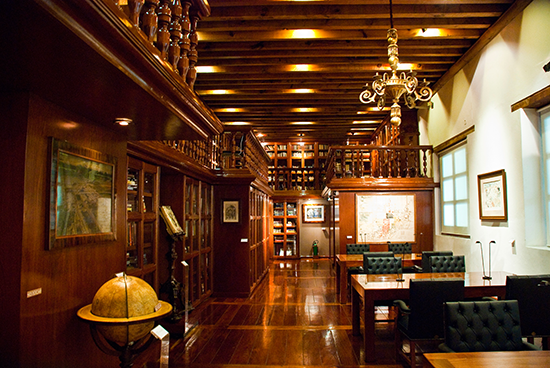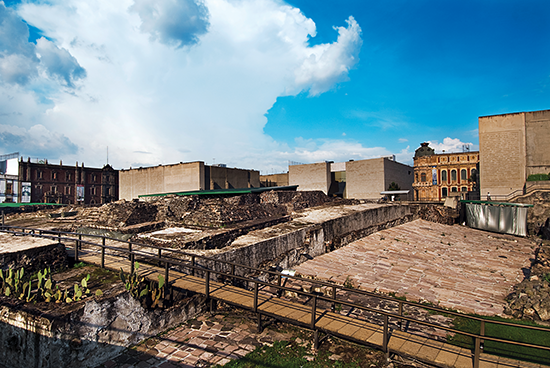The 4 Most Interesting Museums in Mexico City

The history of Mexican museums commenced after the unexpected finding of the Coatlicue and Piedra del Sol monoliths in 1790. They were handed to the then Viceroy, Conde de Revillagigedo the 2nd, to be conserved rather than being destroyed–an act that, two centuries earlier, would have been deemed heresy.
Once the Mexican Independence was accomplished, it was decided that a first museum should be set up, and it housed the Coatlicue monolith for many years. This piece, alongside others, were moved to the Palacio de Moneda, a beautiful site to one side of the Palacio Nacional, were they would be exhibited together with other objects of archeological and botanic interest, and animal and mineral interest, thus giving life to the first Museo Nacional around 1824. These days, Mexico City has around 200 museums, galleries, and cultural spaces that reveal the country’s artistic and cultural wealth. You can get started by visiting these four:
1. MUSEO NACIONAL DE ANTROPOLOGÍA
In the heart of Chapultepec, it occupies around 745,000 square feet, of which nearly half is dedicated to the exhibition space. This site was built between 1963 and 1964, and as an architectonic project it is world-renowned.
With 23 rooms, 12 are dedicated to displaying the country’s pre-Hispanic history, right up until the last cultural development in different zones of Mesoamerica before the arrival of the Spanish. The remaining 11 rooms, on the building’s top floor, offer a complete vision of the country’s ethnography. Though the whole museum is recommendable, the halls covering the Maya and Mexica cultures are especially significant in terms of the quality and beauty of their pieces.
Curious Fact
The project for the Museo Nacional de Antropología began in 1910 but was postponed for 50 years due to the Mexican Revolution.

2. MUSEO NACIONAL DE ARTE
Inaugurated in 1982, this museum is set inside what was once the Palacio de Comunicaciones, built between 1904 and 1911. The collection was formed from the pieces of other museums in order to integrate a global vision of the development of Mexican art; from its beginning in colonial times up until the start of the 20th century. The collection, made up of more than 3,000 pieces divided into ‘schools’; includes Novo Hispanic, academic and religious art, travellers and explorers, printmakers, traditionalists, the modernists, and the symbolists, finishing at the contemporary engravers and the Mexican school headed by the great muralists.
Curious Fact
Plaza Manuel Tolsá, which houses the Museo Nacional de Arte, gets its name from the sculptor of the statue of Carlos IV which guards the main entrance, better known as “El Caballito” (‘little horse’).

3. MUSEO FRANZ MAYER
Franz Mayer was an antiquarian originally from Germany who became a naturalized Mexican. Throughout his life he collected huge quantities of artistic objects. Upon his death, the vast collection was given to the people of Mexico.
It displays Talavera pottery (from Puebla), crystal, furniture, wood of different styles and epochs, textiles, and stone, alabaster, and marble sculptures; liturgy objects made out of gold and silver, antique watches, paintings from Viceroyalty and contemporary times, and nearly 20,000 tile pieces. The Franz Mayer also contains an excellent library for History of Art specialists, and a lovely cafe.
Curious Fact
Thanks to the fervent collecting of Franz Mayer, Mexico was able to recover such a large quantity of objects that had been considered lost, because they were abroad. He managed to collect 30,000 pieces.

4. MUSEO DEL TEMPLO MAYOR
Found to one side of what had been the most important building for the Mexicas: Templo Mayor, where upstairs you will find the sacred twins dedicated to their most important deities: Tláloc and Huitzilopochtli. The eight rooms that make up the site display the vast majority of pieces found throughout the last few periods of archeological excavation from 1978 until today.
Here you will find the stone rendering of the goddess Coyolxauhqui, a monumental oeuvre that reproduces the image of the lunar deity sister of Huitzilopochtli; and the imposing Tlaltecuhtli, a monstrous divinity who devours all earthly creatures at the moment of their death.
Curious Fact
In 2006, during the demolition of two buildings close to the Templo Mayor, a monolith of Tlaltecuhtli was found, one of the largest format sculptures in Mexica history (13 x 11 feet): it represents the goddess of the Earth.

More info on Mexico: here.
